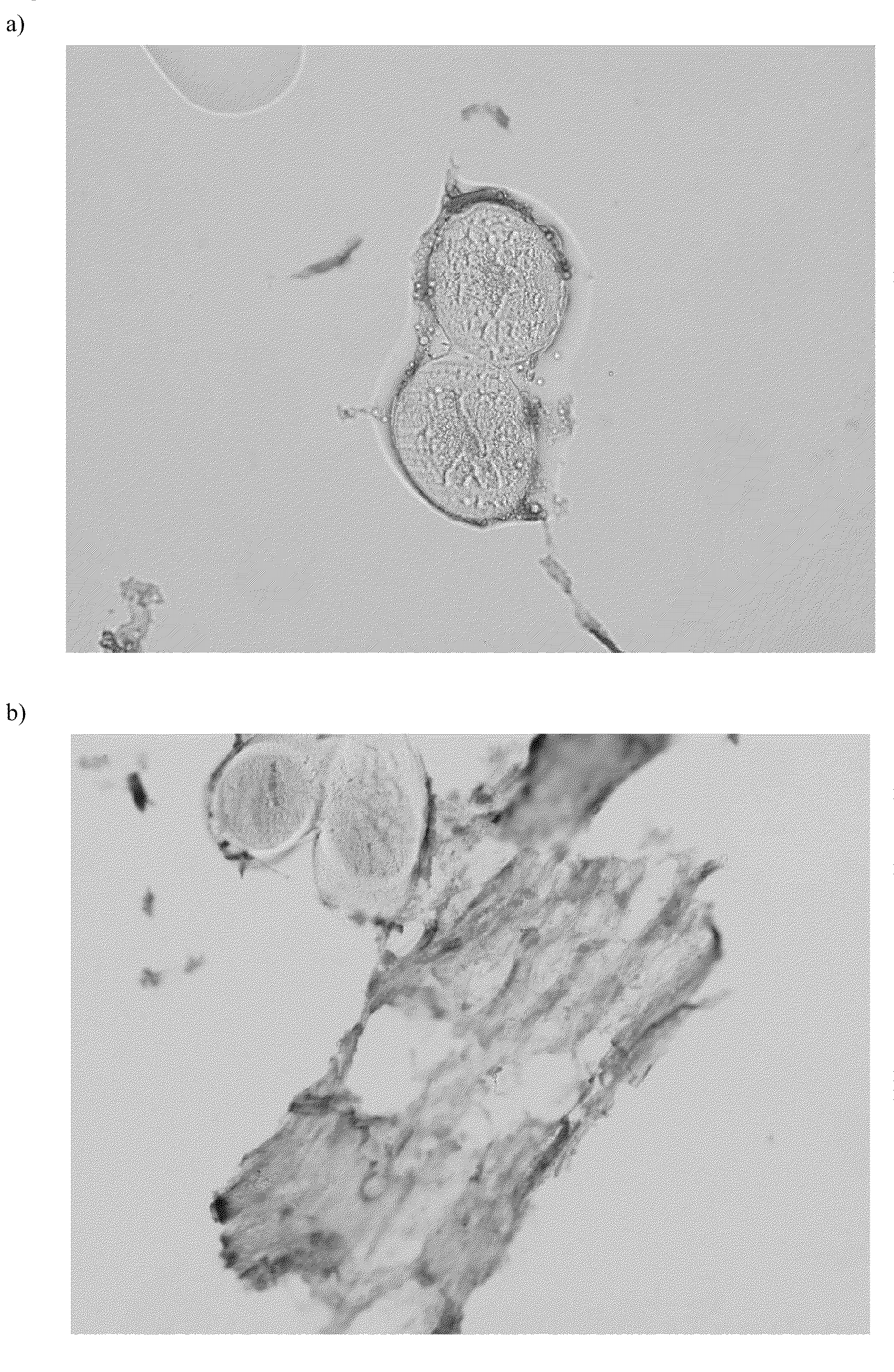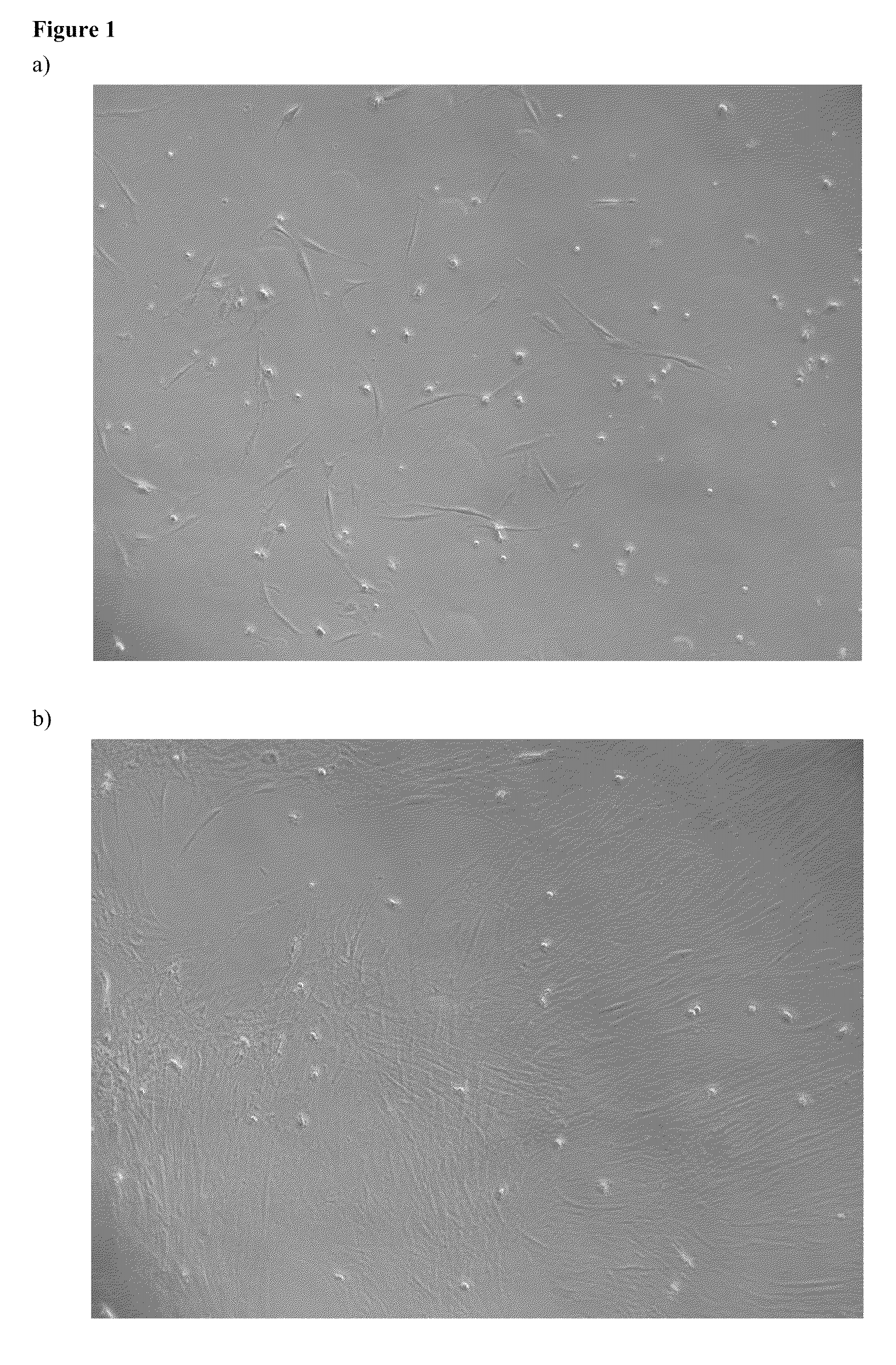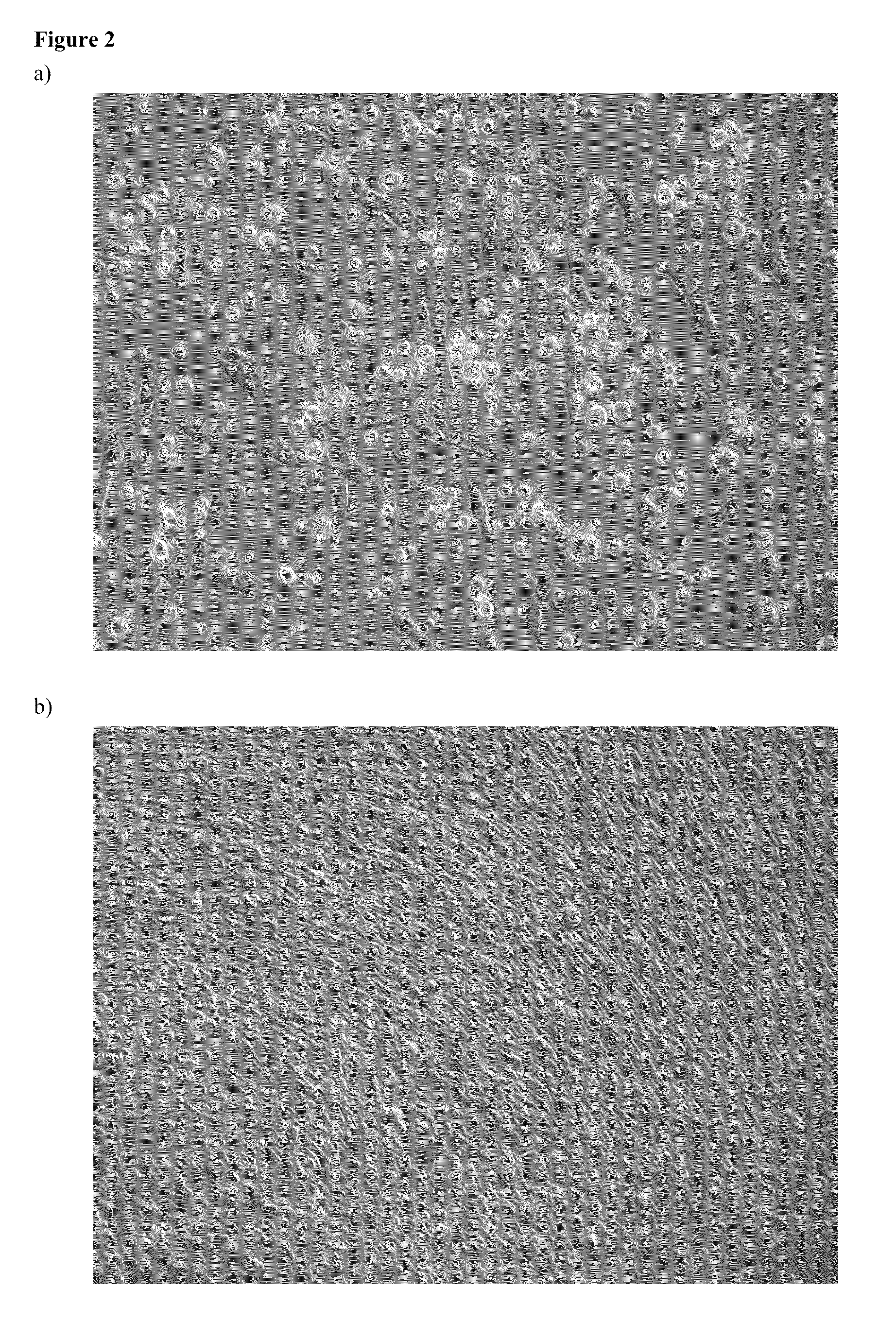Method of cultivation of human mesenchymal stem cells, particularly for the treatment of non-healing fractures, and bioreactor for carrying out this cultivation method
- Summary
- Abstract
- Description
- Claims
- Application Information
AI Technical Summary
Benefits of technology
Problems solved by technology
Method used
Image
Examples
example 1
Aseptic Bone Marrow Mononuclear Cell Harvest
[0100]In the years 2004-2005, the aseptic bone marrow mononuclear cell harvest was performed in 15 patients suffering from peripheral artery occlusive disease as described above (point 2). The age of the patients was in the range of 26-85 years, two of them were harvested twice. From the mononuclear concentrate, the samples for the mesenchymal cell cultivation were obtained and the remaining cells were applied by intra-arterial infusion to the ischemic leg in the context of experimental protocol of the cellular treatment of peripheral artery occlusive disease. Harvest characteristics are shown in Table 1, while the descriptive statistics of the results for the whole cohort of patients is shown in Table 2.
[0101]The results shown below implicate that for the inoculation of one cultivation vessel having the surface of the bottom 75 cm2 with 2.5×106 mononuclear cells, the mean volume of only 23 μl of cellular suspension was necessary (range, 1...
example 2
Cultivation of the Cells in CellGro™ Hematopoietic Stem Cell Medium with Human Serum and the Supplements
[0102]In 2005, mononuclear bone marrow cells from 18 research subjects were cultivated in CellGro™ Hematopoietic Stem Cell Medium with human serum and the supplements. This cohort is somehow different from the cohort described in Example 1, because certain samples from patients characterized in Example 1 were not cultivated in this medium (the medium was not available at that time). To make the cohort larger and more representative, it was later completed with patients who underwent the bone marrow harvest from diagnostic or follow-up purposes for suspected or established haematological disease. Demographic characteristics of the subjects, whose cells were grown in CellGro™ Hematopoietic Stem Cell Medium with human serum and the supplements, are shown in Table 3 and the cultivation results in Table 4.
TABLE 3Age (median and range)65.5 years(39-78 year)Men:women (ratio, percentages)...
example 3
Comparison of the Yields of Mesenchymal Stem Cells Cultivated in Different Media with Different Combinations of Supplements
[0104]Comparison of the yields of adherent cells in different media and with different combinations of supplements was performed with the Mann-Whitney U test and Kruskal-Wallis variation of ANOVA. The results are shown in Tables 5 and 6 and in FIG. 4. In Table 5, the medians of the yields from the media and the ranges between the 25th and the 75th percentile are shown. P≦0.05 is considered as statistically significant.
TABLE 5Mann-Whitney test, yields of adherent cells from differentmedia with different sera and different supplementsStatistical25th to 75thcomparison withCompleteNumber ofMedianpercentileCellGro ™ +cultivation mediumexperiments(×106 cells)(×106 cells)HS + 5SAlpha-MEM + FCS350.60.4-1.0p Alpha-MEM + HS200.70.4-1.1p Alpha-MEM + HS + 5S70.40.25-1.1 p Alpha-MEM + HS +51.20.55-1.95p = 0.0025S + M-CSFAlpha-MEM + HS +212.4 1.2-5.75p 5S + M-CSF + FGF2CellGr...
PUM
 Login to view more
Login to view more Abstract
Description
Claims
Application Information
 Login to view more
Login to view more - R&D Engineer
- R&D Manager
- IP Professional
- Industry Leading Data Capabilities
- Powerful AI technology
- Patent DNA Extraction
Browse by: Latest US Patents, China's latest patents, Technical Efficacy Thesaurus, Application Domain, Technology Topic.
© 2024 PatSnap. All rights reserved.Legal|Privacy policy|Modern Slavery Act Transparency Statement|Sitemap



